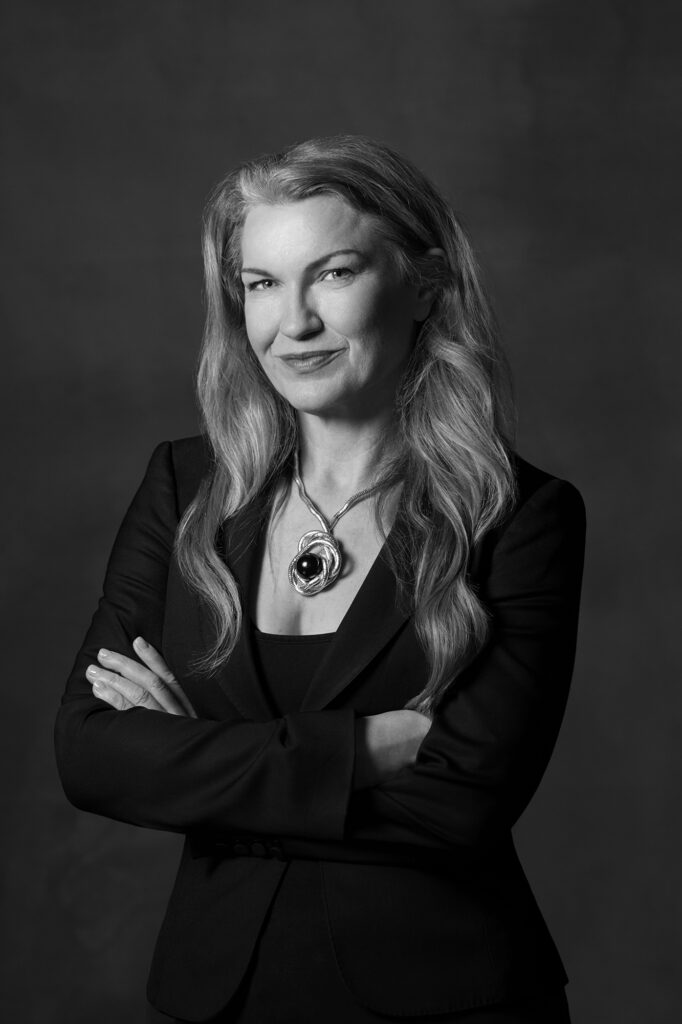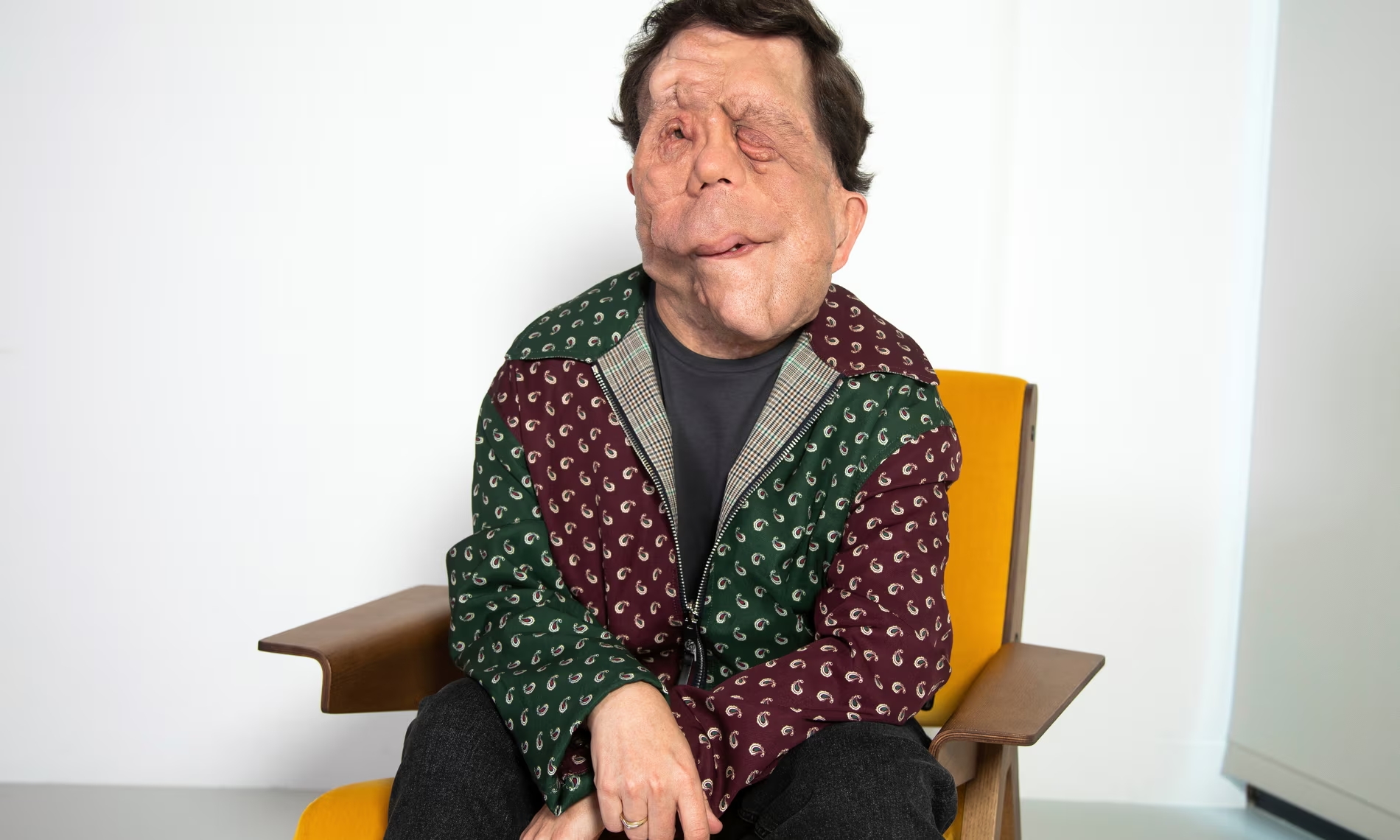The Author
Fay Bound Alberti

‘People say, just get surgery, and I’m like: Bruh, this is after surgery’
Cosmetic surgery fuels the fallacy that looks bring happiness. But what is it like to live with a striking visible difference? The star of a new film about the subject shares his real-life experiences
Cosmetic surgery is back in the news. After six facelifts, a brow lift, neck lift and a lip lift, the reality star Katie Price has new “butterfly lips”, created with tape and filler that make the lips bigger and curled upwards. Price may have had more aesthetic surgery than most, but she’s not alone in going under the knife. Last year there were 35m such treatments around the world. Facial surgeries – eyelid lifts, rhinoplasties, lip fillers – rose by 20% in 2023. Whatever else is going on – pandemics, economic and political crises, wars, human rights abuses – we cling to the belief that if we fix our looks, we can improve our lives.
It’s an understandable – if solipsistic – belief, given the attention paid to beautiful people; they are the ones who seem to get the jobs, the relationships, the Oscars. We are far more likely to trust, forgive and believe people who are good-looking. And if we can have a piece of that, why would we not, despite knowing some treatments end in tragedy. Last week Alice Webb, a 33-year-old mother of five, died from complications following a non-surgical “Brazilian butt lift”.
Our quick-fix culture prioritises appearance over everything else, including mental health. Social media and artificial intelligence exacerbate this trend. One in three women look at Instagram influencers and feel they ought to get some work done after comparing their faces unfavourably with those created by AI. The more algorithms define “beauty”, the more they lead people to those unattainable versions. It’s a doom spiral.
Not all treatments are influenced by fashion or a fear of ageing. Some 100 million people in the world live with a facial scar, mark or disease that creates “visible difference”, the term used by advocacy groups. “Disfigurement” sounds more pejorative, but it is a surgical term and a protected characteristic under the Equality Act 2010.
Surprisingly, people with major facial injuries do not necessarily experience more psychological distress than those worried about having thin lips or acne scars. Low self-esteem linked to facial difference is entirely subjective, and mental illnesses such as body dysmorphia, are on the rise. Surgical solutions are often peddled as a short cut to cure. But there are no quick fixes, and no proof that cosmetic surgery makes us happier. On the contrary, the more treatments we have, the more we pursue; that “new you” is always just around the corner. For Price, it’s her buttocks:“‘I’ve lost weight. So… that’s the next thing to be filled. A nice, courageous [sic] plump, plum bum.”
The fallacy that being more handsome or beautiful will make us happier is at the heart of A Different Man, now on US release. Directed by Aaron Schimberg, the film stars Sebastian Stan, Renate Reinsve and Adam Pearson. Pearson has neurofibromatosis type 1, a genetic condition that has covered his face in benign tumours, and he is a powerful advocate for people with visible difference. He has previously contributed to my Interface project, which explores the emotional history of the human face, from cosmetic surgery to face transplants. We meet at the King’s College Gordon Museum of Pathology in London, where, surrounded by wax teaching models of facial injury, we talk about A Different Man, and what it might reveal about our makeover culture.
Stan plays Edward, a man with neurofibromatosis, the same condition as Pearson. Edward lives an unfulfilling existence – he is “plodding along”, Pearson says; “he is not unhappy but he’s also not happy”. He lives in a cramped New York apartment and appears awkward and shy, especially around his new neighbour Ingrid (Reinsve), a wannabe screenwriter who thinks she might write a play about Edward. But before that can happen, Edward “gets involved in a medical trial that ‘cures’ him”. Edward becomes a conventionally handsome man (played by Stan without his prosthetic mask). After casting off his old life, and killing off Edward, Guy rises from the ashes. He reinvents himself as a real estate agent, using his looks to sell the dream of a new life.

Inside, however, nothing has changed; Guy remains awkward and insecure. When he meets Ingrid and discovers she has written a play about Edward, he auditions, with the help of a prosthetic mask. He is right for the role because, he tells Ingrid, one of his best friends has a facial difference. But it’s a role he never knew how to play, as he realises when Oswald appears, played by Pearson. In the film, as in real life, Pearson is charming and gregarious, fun to be around. He fizzes with energy and confidence, unlike Guy, who even in his beautified state moves stiltedly, like he’s afraid to take up space. Oswald takes over the play, showing how things should be done, and Guy starts to unravel. As Pearson puts it: “He sees these echoes of the past, or the past he could have had, but he couldn’t bring himself to achieve. And there follows a real descent into madness for Edward.”
The crisis at the heart of the film is that Stan’s character isn’t comfortable in either of his social masks. He couldn’t thrive as Edward, either because he anticipated that others would reject him or because he had already rejected himself. Nor could he flourish as Guy, since the change was merely surface deep. In the end, the disability in The Different Man is how society treats Edward, and how he treats himself.
This fits what psychologists of appearance know about the challenges of facial difference. It is easy to internalise the abuse received by others, and people with visible difference are routinely bullied and harassed, mocked and abused. Just last week it was reported that Oliver Bromley, who also has neurofibromatosis Type 1, was asked to leave a restaurant in south London because he was “scaring customers”.

Those with visible difference are not helped by our historically entrenched regard for beauty, and use of facial difference as a shorthand for evil. Think GoldenEye, Skyfall, Casino Royale and Joker; or Darth Vader; Freddie Krueger and Voldemort. There have been films specifically about visible difference – Freaks (1932), The Elephant Man (1980), Open Your Eyes (1997) – but little from the perspective of the individual concerned, and virtually nothing in the past 20 years. Why these films are made, and who is involved, matters. “Is it because they have lived experience,” Pearson wonders, “or is there some kind of fascination about the whole thing; are they trying to make audiences more compassionate and empathetic, or are they going for shock value?”
Pearson is open about the abuse he has experienced. When we met at King’s Cross, he had already spent the morning dealing with social media trolls. Today, with so much emphasis on cosmetic enhancement, people expect Pearson to be able to physically transform, as Edward does. That would be impossible, even if he wanted to: “All these tumours are wrapped around blood vessels and nerves, and I don’t think people realise that. People say, ‘just get surgery’, and I’m like: ‘Bruh, this is after surgery.’”
There is more than one way of being socially marginalised. AI, which promises so much in terms of medical diagnosis and treatment, does not serve people with visible difference well. “Bane of my bloody life,” says Pearson. “Just reading my passport, you do it online and it says, ‘this is a bad photo’, and you say, no, this is a wonderful photo, but your software doesn’t appreciate it. I have problems with the automated booths at airports; I have to unlock my iPhone with a pin number as it won’t recognise my face.”
Oliver Bromley, who has neurofibromatosis Type 1, was told to leave a London restaurant as he was ‘scaring customers’.
Pearson shouldn’t have to be so resilient, but he is. Similarly, his character Oswald turns the presumptions of the viewer upside down by his seeming disregard for his condition. Oblivious to the fact that he might feel socially inadequate, Oswald goes into the world expecting to be accepted and liked. And that, psychologists of appearance say, is the only way to be – because if you are downcast or awkward, if you exhibit the timid gestures that Edward does, you invite awkwardness from others. It is true that confounding expectations makes people act differently; a lot of the time when people avoid the gaze of those who are visibly different, it is because they are uncertain how to act.
What’s uncomfortable about this approach is that it puts all the work on to the person with visible difference. It requires individuals like Oswald – and by extension Pearson – to be exemplars for the “facially different community”. It’s a role that Pearson has taken on graciously, though not always one he has chosen. “When you get the ‘role model’ label thrust on you, and it does get thrust on you, sometimes people think you’re speaking for everyone. And I can only speak for myself. I care about advocacy. Whereas other people might be, ‘that’s not my job to explain it to you’. But then whose is it? Who is better equipped to do it than me? So, if me talking about it ad nauseam, until I get bored, and that means someone like me gets an easier ride, and it makes the world a better place, then rock and roll. It’s not all about me,” Pearson laughs. “It should be, but it’s not.”
Critics have applauded the film’s refusal to give viewers any easy answer to the question of facial difference. I am interested in how far we can move past it, to see a person in their entirety. When Pearson is in a film that doesn’t mention visible difference, we will have evolved as a society. As I walk him to his taxi, Pearson is stared at repeatedly, and I am unsure whether it’s because of his fame, or the way he looks. He tells me that when he first met Stan, and Stan wanted to get into the role, he had said to him: “I could talk to you for ages, until the cows come home, about having a disfigurement and you’ll never, ever get it. Though, equally, what you do understand is what it’s like to be known and lose privacy that way. I’ve always said the two ways to lose your anonymity in society are either to have a disfigurement or become famous. So, I’ve kind of shafted myself on both counts. The public still thinks they own you, or that you owe them something.”
Dr Fay Bound Alberti is professor of modern history at King’s College London, where she is director of Interface and the Centre for Technology and the Body. Her new book Face Value: A Cultural History of Being Human will be published by Allen Lane in 2025
Further reading
[carousel_slide id=’329′]



